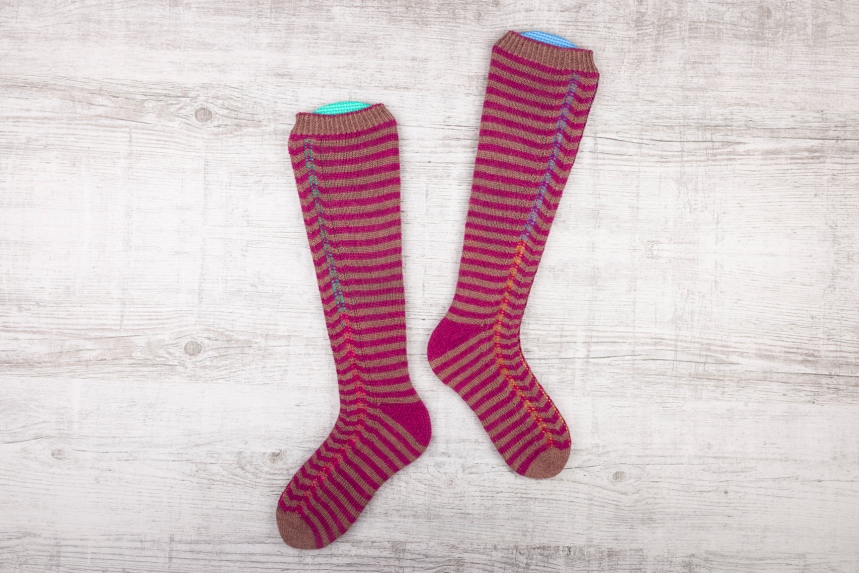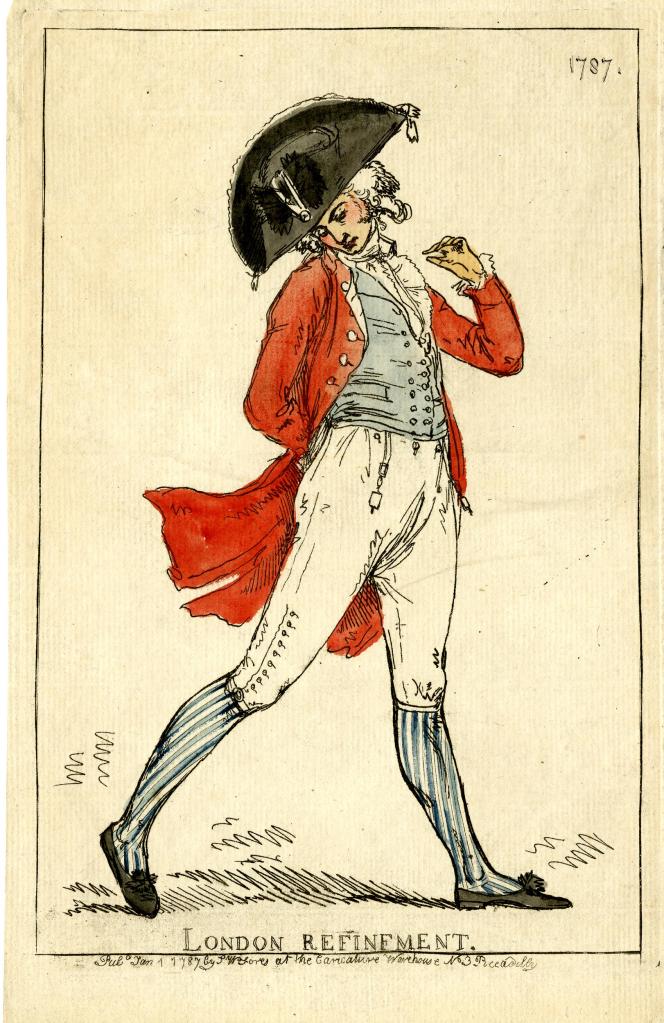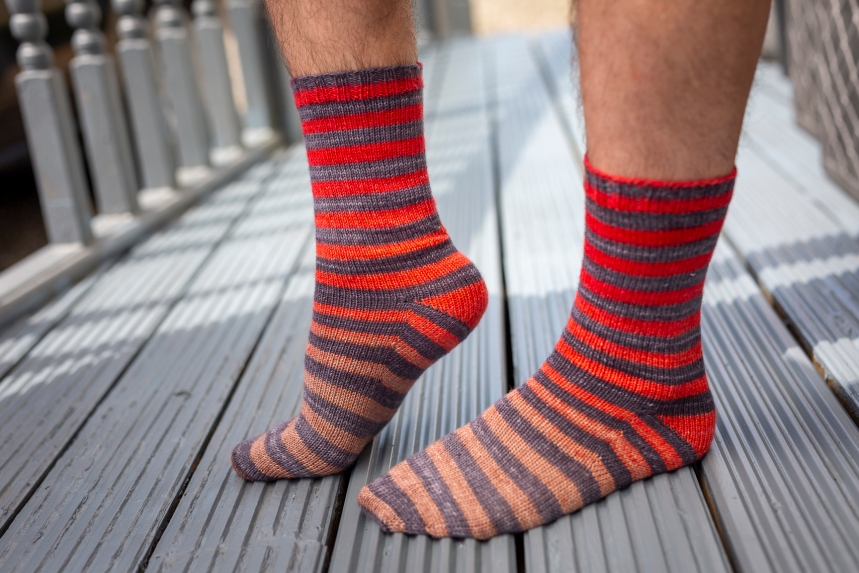In case you didn’t know, I am a huge fan of stripey socks and stockings!

And it seems that many Bluestocking club members are too: it has been wonderful to see all the Phillis Wheatley Peters stockings popping up, knitted in a huge variety of colourful, self-striping sock yarns. I always have a self-striping pair on my needles . . .

. . .and this pair reminded me of this satirical depiction of George IV (then Prince of Wales) whose allover stripey attire seems to be amusing the braying zebra behind him on the wall.

By 1787, when the prince was depicted, resplendent in his zebra stripes, men’s stripey stockings were both the height of contemporary fashion (and the predictable focus of satiric ridicule).



“Their legs are covered in all the colours of the rainbow” the Town and Country Magazine noted. But the fashionable young men of London were only able to enjoy wearing their new rainbow and zebra stripey stockings because of a technical innovation in framework stocking knitting which had occurred some years earlier.
Stockings with vertical ribs – which revealed the shapely lines of the leg to great effect – began to be popular for men around the middle of the eighteenth century. Jeremy Farrell suggests that the white, silk, vertically ribbed pair depicted on the legs of Augustus Keppel in Reynolds’ famous portrait were likely to have been hand-knitted, because, at that time, ribbed fabric could only be formed on stocking frames through an intensely laborious process of dropping and realigning individual stitches.

Several attempts at developing technology to create machine-knitted ribbed fabric were made in the 1730s and 40s, but it was Jedediah Strutt, who in 1758, patented a version of the stocking frame whose alternating horizontal and vertically positioned needles efficiently created a neat rib. Strutt established a successful stocking manufacturing business in Derby, and his distinctive ribbed stockings became known as Derby ribs. Strutt’s innovation was quickly followed by others: new methods of introducing alternating vertical colours (via a form of mechanised intarsia) and a range of knit-purl textures, were patented by other stocking manufacturers in France, Britain, Spain and Portugal. Soon the legs of eighteenth-century European men were a riot of ribs and stripes.

Just as in the eighteenth century, then, the stripey socks and stockings favoured by contemporary knitters have been made possible by the creative and technical innovation of those who develop and dye the yarns with which we love to knit.

Further reading: Jeremy Farrell, Socks and Stockings (1992); Michel Pastoreau, The Devil’s Cloth: A History of Stripes (1991; 2001)



I REALLY enjoyed the funny cartoons in this one.
LikeLike
When I was a child, the only thing my father wore to work that had significant color was his necktie. He had a collection of tartan ties (he maintained there was no such thing as an ugly tartan), and always said that before he made his preference known he’d been given too many ugly ties as gifts! I know the socks my mother carefully darned for him had only the most sedate clocks (sometimes a textured pattern of the same color as the sock body) down the side. It’s therefore been quite exciting to see the peacockery of earlier masculine fashion. Even more interesting is the story of mechanical ingenuity that helped make the fashion accessible to many. Thanks as always for a fascinating dive into history, Kate.
LikeLiked by 1 person
Wow, they were certainly Dandies!!
LikeLike
I agree with BETH G, the shapely male leg should be fashionably displayed again! We only get to see them on the cyclists on TV 😂
I wonder if this means a vertically striped sock is coming for the last pattern….
LikeLike
Ooooh. I like that idea!
LikeLike
It’s rather sad that men wear long pants these days….those amazing stockings ought to have a revival!
I had a female colleague who was fond of horizontally striped tights. She had a black and yellow pair that made he look like a giant bee.
So many possibilities for animal mimicry!
LikeLiked by 1 person
Vertical stripes do indeed seem to be a great technical achievement when knitted in the round. Well done Jedediah Strutt.
I love me a good pair of colourfully striped socks too.
LikeLiked by 1 person